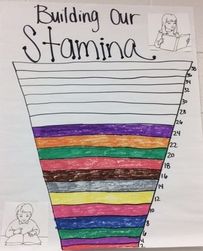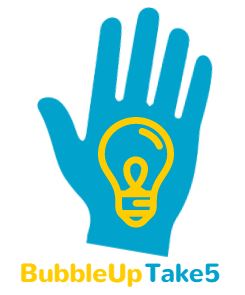 Lemon Road Elementary Lemon Road Elementary Anchor Charts I love these fun, colorful, thought provoking charts on poster paper, but after visiting some first and third grade classrooms I get the allure of anchor charts now more than ever. If you visit most middle school classrooms you won't see them -- or at least not nearly as many as I encountered in these elementary classrooms. It isn't just that they are there for easy references, it's the act of creating them as a class that unlocks their power. So no, having some mass produced poster you put on your wall is NOT the same. Anchor charts offer a place to make thinking visible and then to keep that thinking for future reference. We created an anchor chart about writing in history the very next day in my class and throughout the week I found myself referring to it for students multiple times. It's a graphic cue for visual learners and secondary schools need more of them. A teacher also mentioned taking pictures of anchor charts and placing them in a binder at each table for easy reference if you need to reclaim wall space after a unit. I absolutely love this idea! Responsive Classroom We need responsive classroom at the secondary level, or at least elements of it. I saw kids giving responsive classroom signs when they needed a pencil or when they made a connection with someone about what was being learned. Heck, I even saw two adults motion the connection sign when they were explaining best practices to us. I don't even think they knew they were doing it. There has got to be a way to carry this model into our middle and high school classrooms. Sure, a morning meeting with 50 minute classes and +130 students probably isn't going to work -- but it's worth exploring how to incorporate these ideas into instruction at higher levels. It builds community, which is good for teachers and kids alike. When students feel connected, they are more apt to engage in learning. The First 20 Days I am almost embarrassed that I didn't know about the idea of structuring the first twenty days of teaching, outlined in the book Guiding Readers and Writers by Fountas and Pinnell, but I am guessing that I am not the only middle school teacher out there who wasn't aware of this practice -- so I'll try not to be. I have a child in elementary school so I've heard about "best books," reader's workshop, and building independent reading stamina, I just didn't realize that it was all coming from the same place. Apparently, this philosophy is the bedrock for teaching literacy routines for the beginning of the year to elementary students so it seems that we all need to read it. I'm not advocating that we teach the first 20 days at secondary, but if this is what our students come to us knowing and expecting, we should be building on these practices rather than reinventing the wheel. My copy is on it's way and you better believe that I will be using what I learn to inform my middle school instruction. Breathe Life into Guided Practice I do not do a lot of planned guided practice in my middle school classroom. I tend to work with students as needed when they are working independently or in groups. I push in -- help -- and then move to the next student who needs my assistance. This means that my small group time with students is haphazard at best. I have also observed a lot of secondary classrooms during my 12+ years in education and I have never seen guided practice in a large class setting (I am sure someone is doing it -- but I don't think it is common practice). Based on what I saw in two first grade classrooms, I'd like to structure my instructional time to allow more time to work with small groups to learn specific social studies strategies. I can do it (even with over a hundred students). I just need to be intentional about it, making sure that my other students are involved in meaningful work while I flex in to teach small groups. Sure, it's not something that will happen every day -- or even every week -- but I do think it would improve my teaching practice and the learning of my students. Conferences with Individual Students We (secondary teachers) should do this -- and that means we should probably do it together as a team. We should work with students to set individual goals based on data and then include students in the planning process to help them reach their goals. I think that this would be particularly useful in helping students develop literacy goals. It requires a plan for collecting data, a goal setting page, and time to meet with each student. This would be incredibly valuable to students and I want to see if I can make it happen. At a middle school or high school level this could mean a team of teachers is each doing goal setting for a larger group of students, ensuring that each student gets some one-on-one attention and dialog about their progress from at least one instructor. * * * So what does all this mean? Teaching literacy in the content areas at the secondary level is very different than teaching a literacy block to primary students. As a middle school social studies teacher, I see over a hundred students each day and am asked to teach these students very specific content. However, I believe that we are all literacy teachers. We have a responsibility to teach our students skills that make them better readers and writers, better communicators and thinkers. Keeping this in mind, I know that I have a lot to learn from my elementary colleagues who focus so intently on early literacy skills, and I think that we can reconfigure these strategies and ideas to meet our secondary needs. Secondary is different than primary grades. There's no question. That said, elementary schools do SO many things right. During our visit to the elementary school, a middle school colleague pointed out that as secondary teachers, we tend to look to the grades ahead to see what they are doing and how to prepare our students. There's value in that, but we also need to look to the grades that precede our own. Collectively, we have so much to learn from one another -- regardless of whether we find ourselves teaching a class of kindergartners just beginning their educational journey or seniors who are ready to embrace the world beyond our classrooms. I hope this post will encourage you to visit a school near you in the very near future. Your students (present and future) will thank you. Who knows? One of those little energetic ( and undeniably adorable) kindergartners might be in your own classroom in the not too distant future. -Corey You might also like:
0 Comments
Your comment will be posted after it is approved.
Leave a Reply. |
Who We Are
Join our list!Archives
September 2020
Categories
All
|







 RSS Feed
RSS Feed